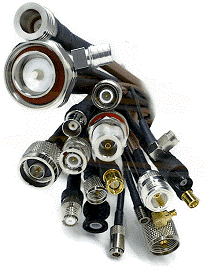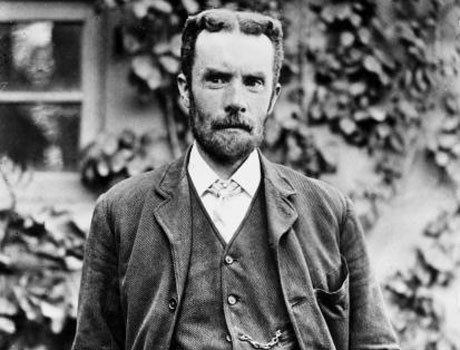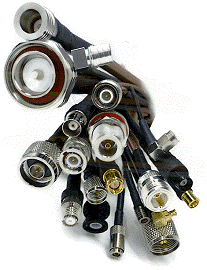Coaxial Cables: A Potted History
If you’ve ever wondered just how your TV receives its signal, the answer is via a handy little tool known as the ‘coaxial cable’.
So how did this humble gadget come about? More importantly, how far does it go back? Believe it or not, coaxial cables – which connect our television to our cable box and the box to the wall outlet which receives the signal – have been around for quite some time.

Back in 1880, an English mathematician named Oliver Heaviside studied the so-called skin effect in telegraph transmission lines, and came to the conclusion that wrapping an insular casing around a transmission line could increase the clarity of the signal. Not only that; he discovered he could also increase the durability of the cable, so the benefits of this humble tool really were twofold.
Oliver patented the very first coaxial cable in his home country that very same year. Some four years later, though, in 1884, Siemens & Halske – an electrical engineering company –registered a patent that was strikingly similar to Oliver’s. According to Wired, though, the cable wasn’t patented across the pond in the US until the 1930s.
Siemens & Halke’s patent, meanwhile, was located in Germany. And it was thanks to the company’s ever-growing presence in Europe – specifically as a result of developing one of the earliest-known electrical generators some 20 years before – that people began to take note. ‘What was this coaxial cable’, people wondered, ‘and could it really revolutionize the industry?’
At the same time, London’s The Royal Institution exhibited waveguide transmissions as demonstrated by Oliver Lodge. Comprising the principal of transmitting information over coaxial wires, the technology also laid the groundwork for similar types of communications. Of course, these included radio, radar and satellites.

A few years later, in 1894, The U.S. Patent office awarded renowned inventor Nikola Tesla with the very first electrical conductor patent. Thanks to previous developments, a combination of technology gleaned from extensive research undertaken over the years was key in constructing the coaxial cables still in use even today.
Moving into the 1900s, now, Lloyd Espenschied and Herman Affel patented the very first recognisable coaxial cable in 1931. It was on behalf of AT&T’s Bell Telephone Laboratories and this version was the very first to feature two transmission wires. These wires shared the same axis, which served to offer a much wider frequency range. What this meant, then, was an even more functional product.
Now we come to 1936 – the year in which the coaxial cable was instrumental in transmitting images from The Games of the XI Olympiad in Berlin. This was the first major event to benefit from the then very exciting technology, with the closed-circuit transmission running the games some 150 miles away in Leipzig. So ground-breaking was this that it marked the very first time large-scale TV images were transmitted over a substantial distance.
Meanwhile, in Australia, the first submarine coaxial cable was laid, using over 180 miles of wire to connect the island of Tasmania to the Aussie mainland. Over in the U.K., the General Post Office (GPO) was getting in on the coaxial act, installing a coaxial telephone wire to London and Birmingham. The first of its kind for the U.K., the 130-mile telephone system provided a total of 40 individual telephone channels.
In 1941, a 220-mile-long coaxial cable was hard at work connecting the U.S. cities of Minneapolis, Minnesota and Wisconsin’s Stevens Point. Despite the coaxial cable being patented in the 1930s (according to the Wired article mentioned earlier), this marked the first commercial use of the tool in America. It was capable of providing a single television channel or 480 telephone lines – so quite a clever little cable, really.
Over a decade later at the first underwater transatlantic telephone cable system – the Transatlantic No. 1 (TAT-1) – connected the American and European continents. A joint venture between the UK GPO and the AT&T, it had – at the centre of it all – a cable more than 1,500 nautical miles in length. Linking the cities of Oban, Scotland and Clarenville, Newfoundland, this clever system carried a total of 36 phone calls. In service until 1978, this was the next big development in the coaxial cable’s life span.
Before long, of course, technology had proved itself to be dependable – not just commercially, but scientifically. Large scale tests were a success and cables became more refined. As with most things – TVs and mobile phones being just two – the cables became smaller, something which marked just how far they’d come.
In time, the most common form of coaxial cable became what we know it to be today: the tool that connects our TVs to cable modems.
So there you have it— a potted history in one of the little-talked-about, but, nevertheless, most important inventions in technological history!
This article was written in collaboration with Field Components.


Comments are closed, but trackbacks and pingbacks are open.